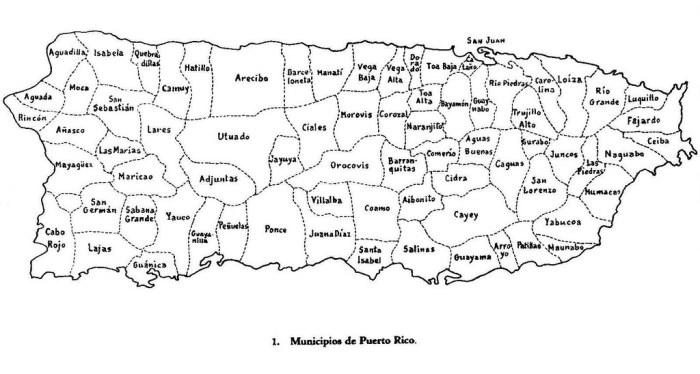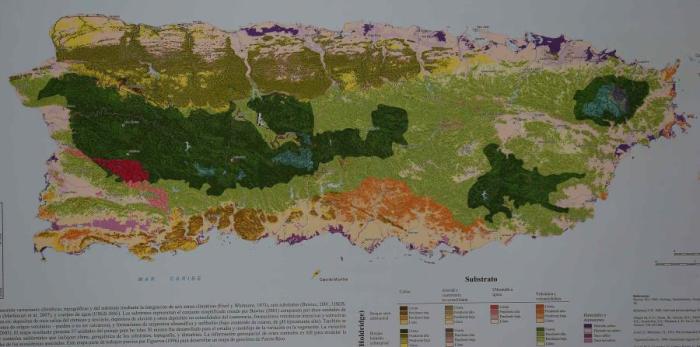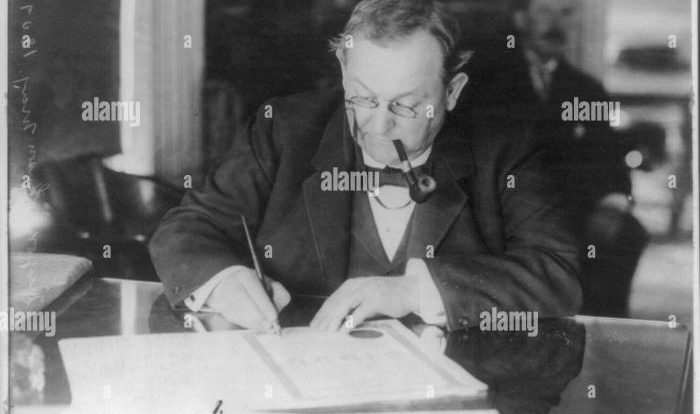Embark on a captivating journey through the Mapa Cacical de Puerto Rico, an extraordinary indigenous map that unveils the rich cultural and historical tapestry of the island’s pre-Columbian past. This enigmatic artifact, crafted by skilled Taíno cartographers, offers a glimpse into the world of Puerto Rico’s indigenous communities, their intricate social structures, and their profound connection to the land.
Delving deeper into the map, we uncover the geographical regions, landmarks, and indigenous settlements that shaped the island’s landscape. The Mapa Cacical not only serves as a historical document but also provides invaluable insights into the cultural and religious beliefs of the Taíno people, preserving their knowledge and traditions for generations to come.
Historical Significance of the Mapa Cacical

The Mapa Cacical is a remarkable historical document that holds immense significance for understanding Puerto Rico’s indigenous heritage. Created in the 18th century, this map serves as a valuable record of the island’s indigenous territories and provides insights into the social and political organization of the Taíno people.
The map was commissioned by the Spanish colonial government in an effort to document the boundaries of indigenous territories and to facilitate land distribution. It was created by Taíno cartographers and reflects their traditional knowledge of the island’s geography and its various regions.
Creation and Purpose
The Mapa Cacical was meticulously crafted using a combination of indigenous and European cartographic techniques. It depicts the island’s topography, including mountains, rivers, and coastlines, and identifies the territories of different Taíno chiefdoms. The map also includes symbols and annotations that provide additional information about the social and political organization of the indigenous communities.
Geographic Features Depicted in the Mapa Cacical
The Mapa Cacical is a significant historical document that provides valuable insights into the geography of Puerto Rico during the pre-Columbian era. The map depicts various geographical regions and landmarks, offering a glimpse into the island’s diverse landscapes and the indigenous Taíno people’s understanding of their surroundings.
Geographical Regions
The map portrays the island’s major geographical regions, including the coastal plains, mountainous interior, and karst topography. The coastal plains are depicted as flat and fertile, with rivers and estuaries providing access to the sea. The mountainous interior is shown as a series of rugged peaks and valleys, with the highest point being Cerro de Punta.
The karst topography, characterized by sinkholes and caves, is also depicted in the map.
Landmarks
The Mapa Cacical also identifies several prominent landmarks, such as rivers, lakes, and mountains. The Río Grande de Loíza, the island’s longest river, is depicted as a winding waterway flowing through the coastal plain. Lake Guánica, the largest lake in Puerto Rico, is shown as a large body of water in the southwestern part of the island.
The Sierra de Luquillo, a mountain range in the northeast, is depicted as a series of peaks and ridges.
Accuracy and Limitations
While the Mapa Cacical provides a valuable representation of Puerto Rico’s geography, it is important to note its limitations. The map is not a precise, modern-day map, and it should not be used for navigation or surveying purposes. The accuracy of the map’s geographic representations is limited by the technology and knowledge available at the time of its creation.
Cultural and Environmental Insights
The Mapa Cacical offers insights into the cultural and environmental understanding of the Taíno people. The map’s depiction of geographical features reflects their knowledge of the island’s resources and their relationship with the natural environment. The map also provides evidence of the Taíno people’s sophisticated understanding of navigation and cartography.
Unveiling the intricate history of Puerto Rico through its Mapa Cacical is a fascinating journey. From the indigenous Taíno settlements to the colonial era, this map traces the island’s rich tapestry. While exploring the island’s culinary delights, don’t miss out on Bubba’s 33 Gluten Free Menu, a haven for those with dietary restrictions.
Bubba’s 33 Gluten Free Menu offers a wide array of delectable options, catering to various tastes. As you savor the flavors, return to the Mapa Cacical to discover the enduring legacy of Puerto Rico’s past.
Indigenous Communities and Settlements: Mapa Cacical De Puerto Rico

The Mapa Cacical depicts numerous indigenous communities and settlements scattered across Puerto Rico. These communities were home to the Taíno people, the island’s original inhabitants. The map provides valuable insights into the demographics, social organization, and economic activities of these communities.
The Taíno communities were typically located near water sources, such as rivers or the coast, for access to drinking water, transportation, and fishing. They were also situated in areas with fertile soil for agriculture, such as the coastal plains and river valleys.
The communities varied in size, ranging from small villages to larger settlements with populations of over 1,000 people.
Social Organization and Economic Activities, Mapa cacical de puerto rico
Taíno society was organized into clans and tribes, each with its own cacique (chief). The caciques were responsible for governing their communities, leading religious ceremonies, and managing resources. The Taíno practiced a form of agriculture known as conuco, which involved clearing small areas of land for planting crops such as cassava, maize, and beans.
They also hunted, fished, and gathered wild plants for food.
Settlement Patterns and Land Use
The Mapa Cacical reveals that Taíno settlements were often located along the coast or near rivers, suggesting that they relied heavily on fishing and water transportation. The map also shows that the Taíno practiced shifting cultivation, moving their settlements to new areas as the soil became depleted.
This pattern of land use allowed them to maintain sustainable agricultural practices and avoid overexploiting the environment.
Cultural and Religious Significance

The Mapa Cacical is not only a geographical representation of Puerto Rico but also a repository of indigenous cultural and religious beliefs. It depicts various symbols and motifs that provide insights into the spiritual practices and worldview of the Taíno people.
Cultural and Religious Symbols
The map features several petroglyphs and symbols that hold cultural and religious significance. These include:
- Cemi Idols:Representations of Taíno deities or ancestors, often depicted as anthropomorphic figures with elaborate headdresses and body paint.
- Coquí Frog:A sacred animal associated with rain and fertility, often depicted in petroglyphs and ceramics.
- Spiral Motifs:Found in various forms on the map, these motifs represent the cyclical nature of life, death, and rebirth.
- Geometric Patterns:Complex geometric patterns are believed to have been used in rituals and ceremonies to connect with the spiritual realm.
Preservation of Indigenous Knowledge
The Mapa Cacical serves as a vital tool for preserving and transmitting indigenous knowledge and beliefs. By depicting the locations of sacred sites, ceremonial grounds, and cultural landmarks, the map provides a tangible record of the Taíno people’s spiritual heritage.
It has also played a crucial role in the revitalization of Taíno culture in recent years.
Source of Information on Pre-Columbian Spiritual Practices
The map offers valuable insights into pre-Columbian spiritual practices. By studying the symbols and motifs depicted on the map, researchers can gain a better understanding of the Taíno people’s beliefs about the afterlife, their relationship with the natural world, and their rituals and ceremonies.
Comparative Analysis with Other Indigenous Maps
The Mapa Cacical is a unique and valuable document that provides insights into the indigenous mapping practices of the Taíno people of Puerto Rico. However, it is not the only example of indigenous cartography. Many other indigenous communities around the Americas and beyond have created maps to represent their territories, resources, and cultural practices.
When comparing the Mapa Cacical to other indigenous maps, several similarities and differences emerge. One commonality is the use of pictographic symbols to represent geographic features and cultural elements. For example, many indigenous maps use animal symbols to indicate hunting grounds or water sources, and geometric shapes to represent settlements or ceremonial sites.
Cartographic Techniques
In terms of cartographic techniques, the Mapa Cacical exhibits a combination of linear and symbolic representation. Linear elements, such as lines and dots, are used to depict rivers, trails, and boundaries. Symbolic elements, such as circles and squares, are used to represent settlements, ceremonial sites, and other important locations.
Other indigenous maps may employ different cartographic techniques. For example, some maps use a more abstract or conceptual approach, with less emphasis on precise geographic accuracy. Instead, these maps may focus on representing cultural relationships, kinship ties, or spiritual beliefs.
Geographic Representations
The Mapa Cacical provides a detailed representation of the island of Puerto Rico, including its coastline, rivers, mountains, and settlements. However, the map’s geographic accuracy is limited by the available technology and knowledge of the time.
Other indigenous maps may exhibit different geographic representations. Some maps may focus on a specific region or territory, while others may attempt to represent a broader area or even the entire world. The level of geographic detail and accuracy can vary greatly depending on the purpose and context of the map.
Indigenous Mapping Practices
The Mapa Cacical and other indigenous maps offer valuable insights into the diverse mapping practices of indigenous communities. These maps not only provide geographic information but also serve as cultural and historical documents, reflecting the knowledge, beliefs, and values of the people who created them.
The study of indigenous mapping practices can contribute to a deeper understanding of the cultural diversity and intellectual achievements of indigenous communities. It can also challenge Eurocentric perspectives on cartography and promote a more inclusive and diverse representation of the world.
Preservation and Accessibility

The Mapa Cacical is a remarkable artifact that has survived for centuries, despite the challenges of time and environmental factors. Today, the map is preserved at the Museo del Hombre Dominicano in Santo Domingo, Dominican Republic, where it is carefully stored in a controlled environment to ensure its longevity.Efforts
have been made to digitize the Mapa Cacical, making it accessible to researchers and the public beyond the confines of the museum. High-resolution digital scans of the map are available online, allowing scholars and enthusiasts worldwide to study and analyze this valuable document.The
digitization of the Mapa Cacical has opened up new possibilities for its educational and cultural applications. It can now be used in classrooms to teach students about indigenous history, geography, and culture. Museums and cultural institutions can incorporate the map into exhibitions and interactive displays to engage visitors and promote awareness of Puerto Rico’s rich indigenous heritage.
FAQ Explained
What is the significance of the Mapa Cacical de Puerto Rico?
The Mapa Cacical is a priceless historical artifact that provides insights into the indigenous heritage of Puerto Rico, documenting the geographical regions, landmarks, and settlements of the Taíno people.
How was the Mapa Cacical created?
The map was meticulously crafted by Taíno cartographers using natural materials, such as bark or hide, and adorned with intricate symbols and motifs that conveyed geographical and cultural information.
What does the map reveal about indigenous communities?
The map pinpoints the locations of indigenous settlements, providing valuable information about their demographics, social organization, and economic activities, shedding light on their way of life.
